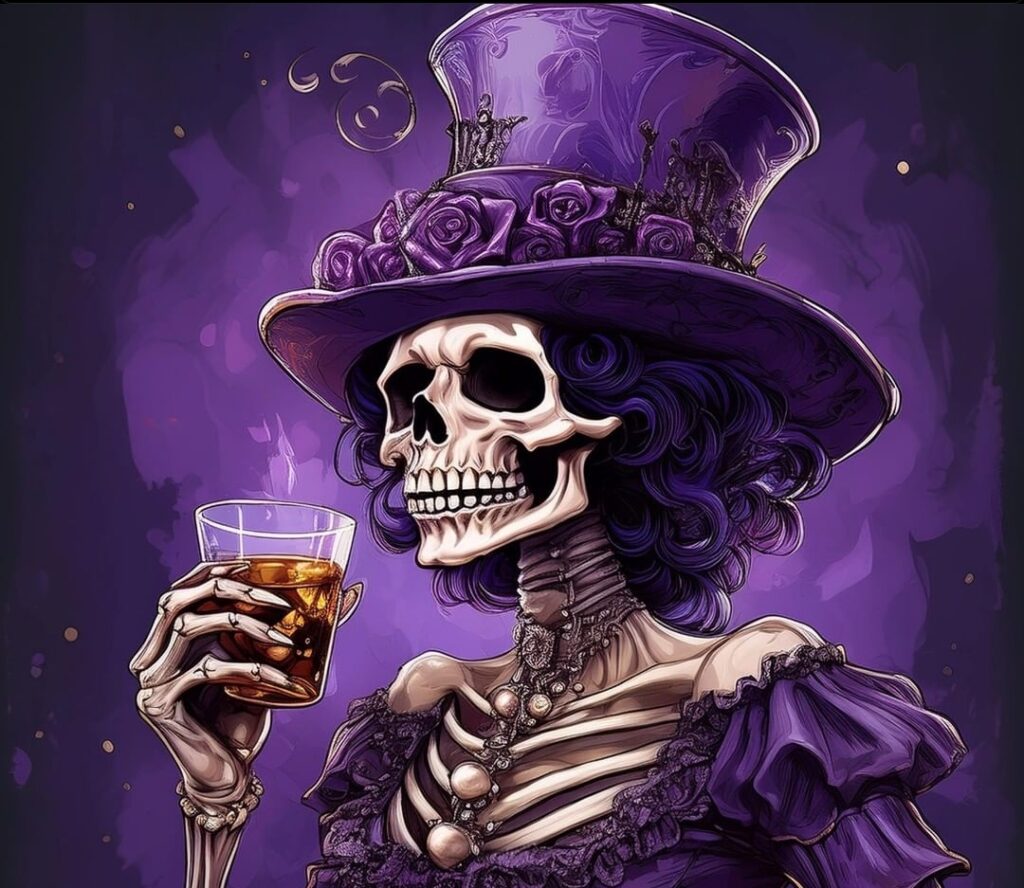Each year, as November arrives, Haitians across the country gather to honor their ancestors in a vibrant, soulful celebration known as Fèt Gede—Haiti’s version of the Day of the Dead. Unlike the more commonly known Día de los Muertos in Mexico, Fèt Gede blends elements of Vodou spirituality, African traditions, and Haitian culture, creating a uniquely Haitian experience that is both joyful and solemn. However, despite its rich history, the festival is often clouded by misunderstandings, especially in communities unfamiliar with Haitian Vodou. Let’s dive into the history, meaning, and customs of Fèt Gede to shed light on this fascinating tradition.
A Brief History of Fèt Gede
Fèt Gede, or “Feast of the Dead,” has roots in West African spiritual traditions brought to Haiti by enslaved Africans, as well as Catholic customs from French colonizers. While many think of Vodou as an esoteric or secretive practice, it is a faith rooted in deep respect for ancestors and the spirits, or lwa. Gede is a family of spirits associated with death, life, fertility, and protection. This family includes Baron Samedi, the most recognizable of the Gede lwa, known for his top hat, dark glasses, and humorous, mischievous personality. Baron Samedi and his counterparts embody both the death and renewal associated with the Gede spirits.
Throughout Haiti’s history, Vodou has often been misunderstood or misrepresented, both in Haiti and abroad. During the U.S. occupation of Haiti in the early 20th century, American media frequently depicted Vodou as something sinister, equating it with “dark magic.” Yet, for Haitians, Vodou is a sacred tradition that speaks to resilience, community, and spirituality, with Fèt Gede being a central expression of this heritage.
Purpose of Fèt Gede
At its core, Fèt Gede is a time to remember and honor the dead, celebrate life, and seek blessings from the spirits of the departed. It’s a communal event that brings families together, allowing them to connect with loved ones who have passed away. The Gede spirits are not only guardians of the dead but are also believed to guide the living, offering protection and insight.
For many Haitians, Fèt Gede is a way to release any pain or grievances tied to loss, while simultaneously celebrating the continuation of life. Unlike Western notions of death as a solemn or fearful subject, Fèt Gede embraces it as a natural part of the life cycle. Death is not the end but a continuation into the spiritual realm, where ancestors watch over and support the living.
Celebrations and Customs of Fèt Gede
Fèt Gede is typically celebrated on November 1st and 2nd, aligning with Catholic All Saints’ Day and All Souls’ Day. The heart of the celebration takes place in cemeteries, especially in the famous Cimetière de Port-au-Prince. Haitians make offerings to the spirits and decorate graves with flowers, candles, and food. Common offerings include black coffee, spicy rum (known as kleren), smoked fish, cassava, and sweets.
Here’s a look at some of the central customs that make Fèt Gede unique:
- Dress and Dance: Celebrants often dress in the traditional Gede colors—purple and black—and don accessories that honor Baron Samedi and other Gede spirits. Dance plays a huge role in the celebration, with participants swaying and moving in trance-like rhythms, which invite the spirits to join in. Dance is accompanied by drumming and music, especially the use of rara instruments, as celebrants honor and “feed” the spirits with sound.
- Face Painting: Many participants paint their faces like skeletons or skulls, symbolizing a connection to the dead. This practice is not about fear but reverence, marking a bridge between the worlds of the living and the departed.
- Offerings to the Dead: To please and nourish the spirits, celebrants leave offerings of food, rum, cigars, and sometimes items the deceased enjoyed in life. The spirits of Gede are often given hot peppers or spicy foods to “awaken” them, and these offerings are treated with respect as part of the ritual.
- Spiritual Possession and Consultation: During Fèt Gede, it’s not unusual for practitioners to experience spiritual possession, with some claiming that Baron Samedi or other spirits “mount” them, guiding them to offer advice, humor, and predictions. People may also consult Vodou priests, or houngans, and priestesses, or mambos, for advice on personal or family matters. These sessions bring an added layer of meaning to the celebration, helping families feel connected to both their past and their future.
Addressing Misinformation Around Fèt Gede
Because of longstanding stereotypes and misrepresentations of Vodou, many outside Haiti perceive Fèt Gede as “spooky” or even “sinister.” Yet, for Haitians, this day is about love, respect, and connection. It’s a time to reaffirm bonds between families, communities, and the spirits who guide and protect them. Contrary to common myths, Vodou is not about “dark magic” or “curses” but a life-affirming tradition that celebrates community, the natural world, and the spirits of ancestors.
In recent years, efforts have been made to correct misunderstandings around Vodou and to celebrate it as a legitimate religion with deep cultural significance. Documentaries, festivals, and cultural ambassadors continue to educate the world about the positive aspects of Vodou, shedding light on how its customs, like those observed during Fèt Gede, embody resilience, compassion, and joy.
How to Join the Celebration
For those interested in celebrating Fèt Gede, either as visitors to Haiti or from afar, the key is to approach the tradition with respect and an open mind. Here are some ways to partake:
- Visit a Local Cemetery: For those in Haiti or those with Haitian ancestry, visiting a cemetery and honoring ancestors with flowers, candles, and offerings is a traditional way to show respect.
- Dress in Traditional Colors: Embrace the colors of Fèt Gede by wearing purple, black, or white. This simple act shows solidarity with the celebration and respect for its roots.
- Learn About Haitian Vodou: Take the time to read about Vodou from authentic sources, or visit Vodou temples if invited, where you can learn directly from practitioners about the spirituality behind Fèt Gede.
- Create an Altar: If you’re celebrating at home, you can create a small altar with candles, flowers, and photos of loved ones who have passed. It’s a beautiful way to honor them and feel connected to this powerful tradition, even from a distance.
- Join Local Events: In areas with a Haitian diaspora, you may find public events or parades honoring Fèt Gede. This can be a great way to experience the music, food, and customs firsthand.
Fèt Gede: A Celebration of Life and Death
Fèt Gede stands as a powerful reminder of Haiti’s rich culture, resilience, and the enduring love between the living and the dead. Despite the misunderstandings surrounding Vodou, this festival has endured as a cherished celebration of heritage and a call to remember those who came before. It’s not merely a “Day of the Dead,” but a vibrant, affirming expression of life, spirituality, and the unbreakable bond between past and present.
For Haitians, Fèt Gede is an integral part of cultural identity, a day to laugh, to cry, to remember, and to dance—because to honor the dead is, in essence, to celebrate life itself.

